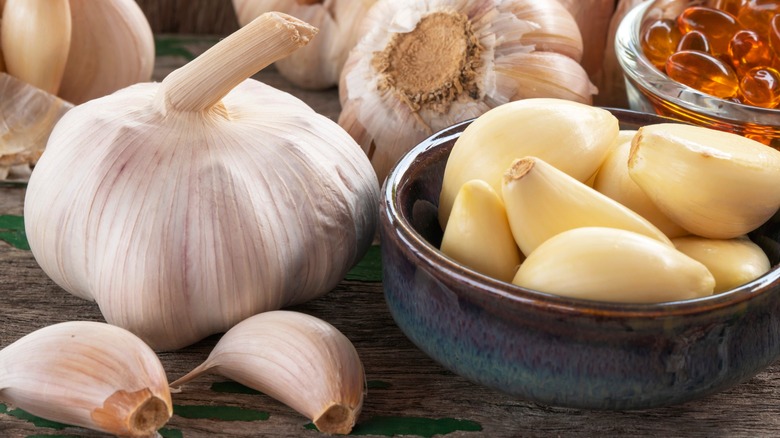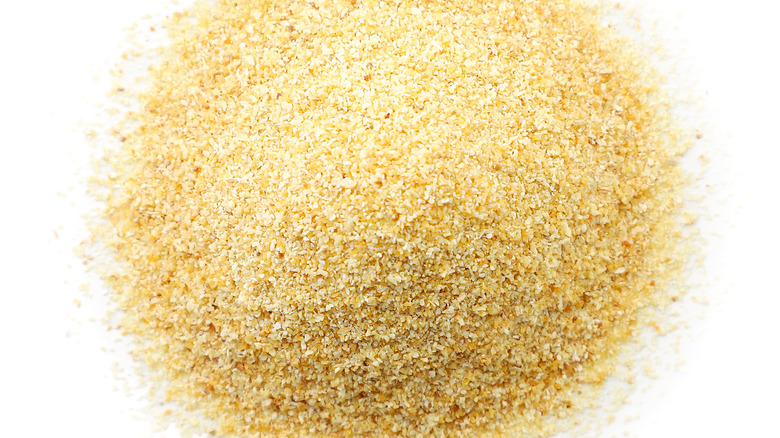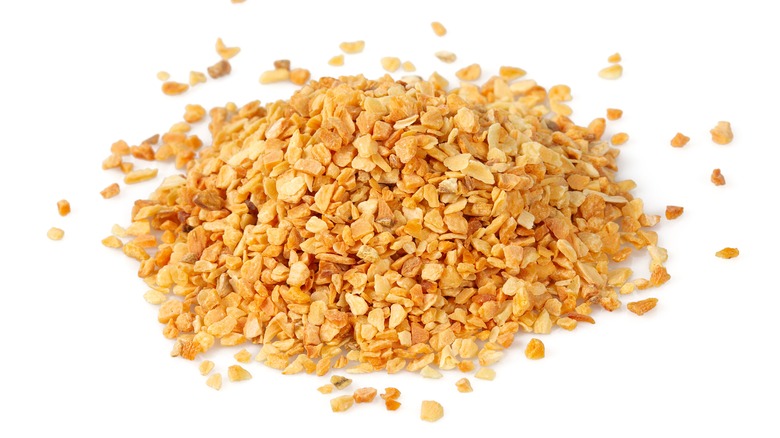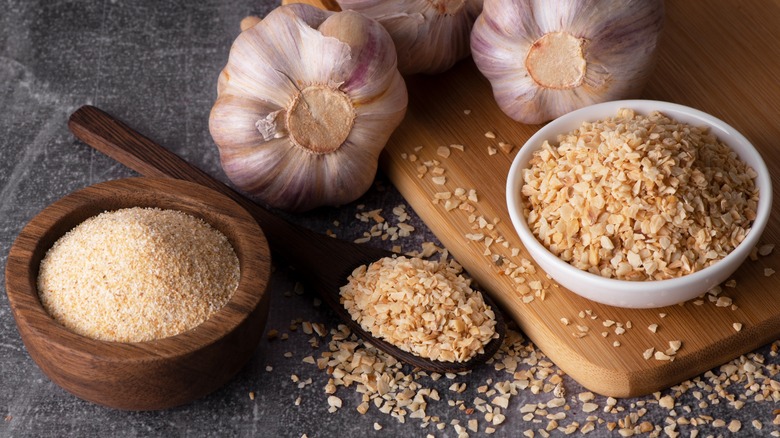When To Use Garlic Powder Vs. Granulated Garlic
If you're an avid cook, there's a good chance you have some form of garlic in your kitchen. Whether it's a fresh head of garlic, a jar of it pre-minced, garlic salt, garlic powder, or granulated, the flavor elevates just about any dish it touches and can add a subtle spiciness if used in copious amounts. There are an endless number of tips for cooking with garlic in various forms on the web. However, if you've ever wondered if there's a real difference between things like garlic powder and granulated garlic, you're not alone. It's easy to confuse them, as they come in similar containers and are often used interchangeably.
According to The Washington Post, the size of the seasoning particles is the only true difference between the two, but that affects when you should use each. Garlic powder is, well, a powder. It's much finer in consistency than granulated garlic. That being said, the size of the granules predicts the spice's ability to work in different dishes, and how long it can last on the shelf.
How to use garlic powder
According to Auguste Escoffier, garlic powder's finer consistency makes it ideal to use in dishes with less moisture so that you can incorporate the rich flavor without needing as much liquid to activate the garlic's enzymes. Balancing your dried garlic with the correct amount of moisture is a garlic powder hack that every home chef should be using to improve its flavor. Whether you prefer the stronger flavor or the extended shelf life, it's a great item to keep in your pantry. You can even make garlic powder at home if you need to use up some fresh garlic before it goes bad.
Ethan Frisch, the co-founder of the spice company Burlap & Barrel, explains to The Washington Post that he likes "to use powder in anything where you don't really want the garlic to be visible, and you want the flavor to be fully infused into whatever you're cooking." Overall, it's a great go-to when you don't have time to mince garlic yourself or don't know how to mince garlic extra fine, but still want the flavor to elevate your dish.
How to use granulated garlic
Granulated garlic gets along best with liquid-heavy dishes, such as soups, stews, sauces, or salad dressings, per RawSpiceBar. It also makes for a great barbecue rub, as it meshes with the other spices and adheres to the meat well. Because the dried granules have a more potent profile than fresh minced garlic, this form really shines in dishes where you want to experience an occasional pop of strong garlicky flavor (via Webstaurant).
It works best in dishes that cook for longer periods of time, as it needs more time to hydrate and infuse into the dish due to its coarser consistency. "I might use granulated garlic in a stir-fry or a rub for meat that I'm going to grill where I want the garlic to hold up to the cooking process a little bit longer, or I want a little bit of more distinctive garlic flavor," Frisch says to The Washington Post.
Are they interchangeable?
When cooking, it's best to remember that the two are not as interchangeable as you might think. According to Webstaurant, while both are made from dehydrated garlic, the difference in consistency causes them to thrive in different dishes. Garlic powder has a longer shelf life and is best for dishes with shorter cook times, while granulated garlic doesn't live quite as long on the shelf but works best in dishes with longer cook times. However, swapping them out for one another won't make or break a dish.
A good rule of thumb to follow when substituting the two — since granulated garlic has larger granules, resulting in more air by volume and being less dense than powder — is that 1 teaspoon of garlic powder is equivalent to 2 teaspoons of granulated garlic, per Webstaurant. If you prefer fresh garlic but only have spices, then one fresh clove of garlic can be considered equivalent to ¼ teaspoon of garlic powder, or ½ teaspoon of granulated garlic. If you're trying to mimic fresh garlic, using hydrated granulated garlic will be the best replacement.



